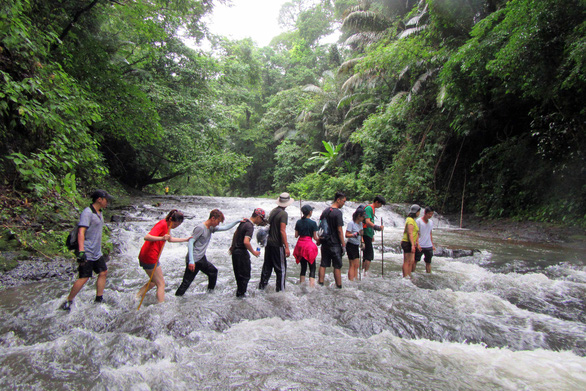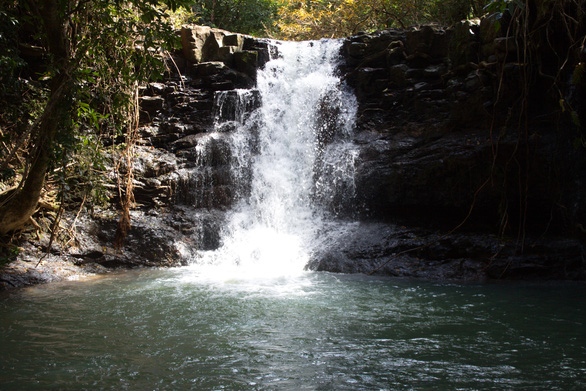Managers of Bu Gia Map National Park, located in Binh Phuoc Province, southern Vietnam have decided to welcome fully vaccinated tourists and reorganize ecotourism activities from January 10, following months of closure due to COVID-19.
Visitors who wish to participate in Bu Gia Map tours must possess a ‘green card’ proving their full COVID-19 vaccination, with their last dose having been administered at least 14 days and no more than 12 months from the time they arrive at the national park, according to their announcement.
To ensure COVID-19 prevention and control, visitors must adhere to government-mandated physical distancing and healthcare protocols.
|
|
| A photo captures a waterfall in Bu Gia Map National Park, Binh Phuoc Province, Vietnam. Photo: N.N. / Tuoi Tre |
Visitors must come to the entrance of the national park to make health declarations using the PC-COVID app and scan QR codes before paying the entrance fees.
Besides, they must comply with regulations on visiting the park.
Travelers who come from localities at low, medium, and high risk of COVID-19 transmission must hold a negative RT-PCR or rapid test result issued no more than 72 hours before entry.
The National Park Management Board recommends not accepting visitors from a locality at very high COVID-19 risk, or people who have not been vaccinated against the respiratory disease.
Binh Phuoc has removed all COVID-19 checkpoints so visitors who meet the above requirements when coming to the province will no longer have to undergo medical isolation.
Bu Gia Map National Park has a total area of 25,601.18 ha.
The park currently has 1,117 species of flora, including many rare and valuable ones such as rosewood, narra padauk, santai wood, nageia fleuryi and over 278 species grown for medicinal purposes.
The park also has more than 400 fauna species.
It is inhabited by 105 species of mammals, of which 30 are in Vietnam’s Red Book, and 246 species of birds, of which 10 are critically endangered like Great hornbills, Siamese firebacks, Brown fish owls, Wreathed hornbills, Peafowls, Orange-necked partridges, Germain's swiftlets, and more.
The reserve is home to more than 70 species of reptiles, 16 being listed in Vietnam’s Red Book.
This is also the habitat of many wildlife species, including sun bears, leopards, Asian wild dogs, Gaur, Germain's peacock-pheasants, elephants, and others, which are included in Vietnam's Red Book.
Many primate species, such as pig-tailed macaques, crab-eating macaques, stump-tailed macaques, red-shanked doucs, yellow-cheeked gibbons, and others, inhabit the national park.
Like us on Facebook or follow us on Twitter to get the latest news about Vietnam!

















































